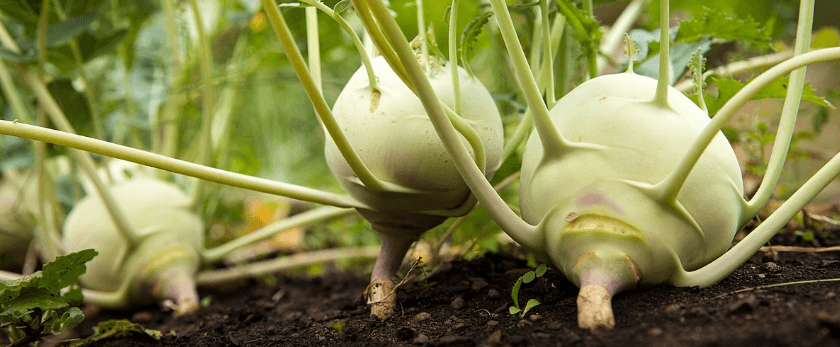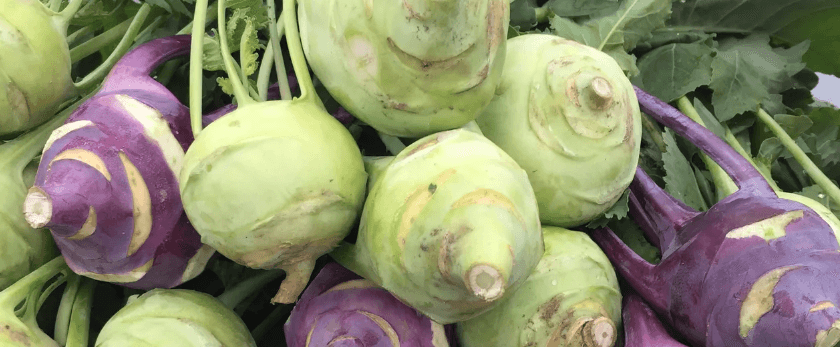Kohlrabi, also known as German turnip, is a versatile and nutritious vegetable that is easy to grow in your own backyard. It belongs to the same family as cabbage, broccoli, and cauliflower, and has a similar taste and texture. However, unlike its relatives, kohlrabi is grown for its swollen stem rather than its leaves. In this article, we will discuss how to grow kohlrabi in your garden, including caring for it, the best time to grow, and common problems you may encounter.
Caring for Kohlrabi
Watering
Kohlrabi plants require consistent moisture to grow well. They should be watered deeply once or twice a week, depending on the weather and soil conditions. The soil should be kept evenly moist, but not waterlogged, as this can lead to root rot. To check if your plants need watering, stick your finger into the soil up to your knuckle. If the soil feels dry, it's time to water.
Light
Kohlrabi plants prefer full sun, but they can also tolerate partial shade. If you live in a hot climate, providing some shade during the hottest part of the day can help prevent the plants from wilting. If you are growing kohlrabi indoors, make sure to place them near a sunny window or use grow lights to provide enough light for the plants to thrive.
Soil
Kohlrabi plants grow best in well-drained, fertile soil with a pH level between 6.0 and 7.5. If your soil is too acidic, you can add lime to raise the pH level. If it's too alkaline, you can add sulfur to lower the pH level. It's also a good idea to add compost or well-rotted manure to the soil before planting to provide the plants with essential nutrients.
Fertilizer
Kohlrabi plants are heavy feeders and require regular fertilization to grow well. You can use a balanced fertilizer, such as 10-10-10, or a high-nitrogen fertilizer, such as 21-0-0, to promote leaf growth. Apply the fertilizer according to the manufacturer's instructions, and make sure to water the plants after fertilizing to prevent burning the roots.
Pruning
Kohlrabi plants do not require pruning, but you can remove any damaged or diseased leaves to promote healthy growth. You can also thin out the plants if they are overcrowded, leaving about 6-8 inches of space between each plant.

Best Time to Grow Kohlrabi
Kohlrabi is a cool-season crop and can be grown in both spring and fall. The ideal temperature for growing kohlrabi is between 60-65°F, but it can tolerate temperatures as low as 40°F and as high as 80°F. In warmer climates, it's best to grow kohlrabi in the fall when the temperatures are cooler. In colder climates, you can start growing kohlrabi in early spring, as soon as the soil can be worked.
Common Problems with Kohlrabi
Pests
Kohlrabi plants are susceptible to a few common pests, including cabbage worms, flea beetles, and aphids. You can prevent these pests by using row covers or applying organic insecticides, such as neem oil or insecticidal soap. If you notice any pests on your plants, remove them by hand or use a strong stream of water to wash them off.
Diseases
Kohlrabi plants can also be affected by various diseases, such as clubroot, black rot, and downy mildew. To prevent these diseases, make sure to rotate your crops every year, avoid overwatering, and remove any infected plants immediately. You can also use disease-resistant varieties to minimize the risk of these diseases.
Bolting
Bolting is when the plant produces a flower stalk prematurely, which can affect the quality and taste of the kohlrabi. To prevent bolting, make sure to keep the soil consistently moist and provide enough shade during hot weather. You can also choose slow-bolting varieties and harvest the kohlrabi before it reaches maturity.
Conclusion
Growing kohlrabi is a rewarding experience that can provide you with a delicious and nutritious vegetable for your meals. By following the tips and techniques mentioned in this article, you can successfully grow kohlrabi in your own backyard. Remember to water consistently, provide enough light, use fertile soil, fertilize regularly, and watch out for pests and diseases. With a little bit of care and attention, you can enjoy a bountiful harvest of kohlrabi throughout the growing season. Happy gardening!










